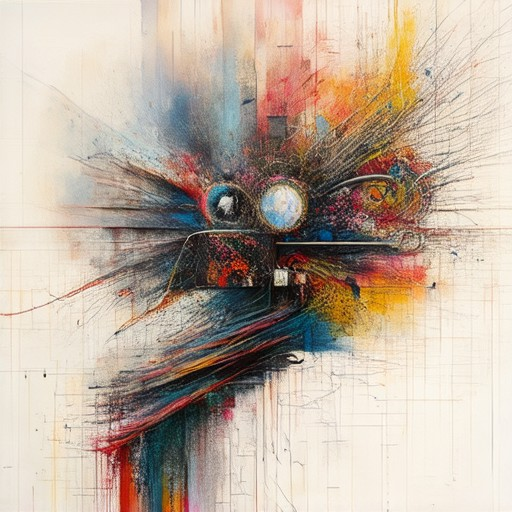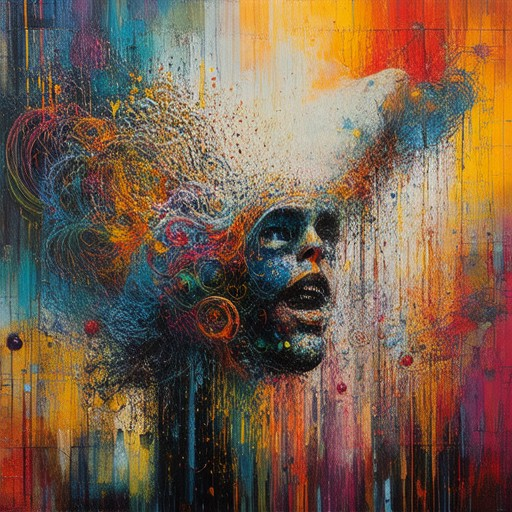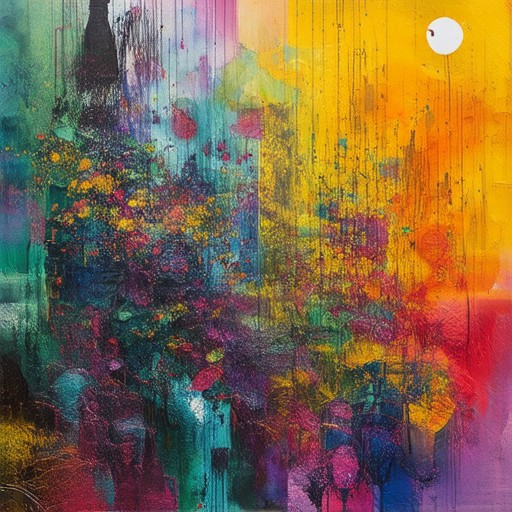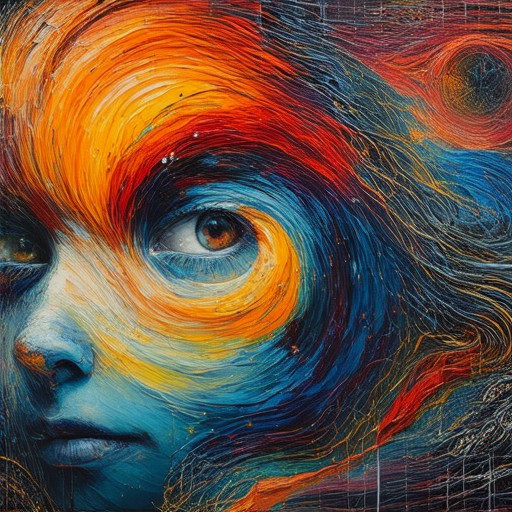Unlock your creative potential with our comprehensive guide to mastering art techniques and tutorials. Whether you’re a complete novice or looking to refine your skills, this article offers a wealth of insights and practical advice to help you excel in various artistic disciplines. From the fundamentals of drawing and painting to advanced methods like sculpture and mixed media, we cover a wide range of techniques designed to inspire and educate. Discover easy art techniques that even beginners can master, along with step-by-step guides and resources to help you stay motivated and informed. Explore the world of art with confidence, knowing that you have access to expert tips and proven strategies to elevate your craft. Let’s dive into the fascinating realm of art techniques and tutorials, where creativity knows no bounds!

What Are the 12 Art Techniques Used by Artists?
We’ve compiled a list of 12 fundamental art techniques that every artist should be familiar with, each offering unique ways to express creativity and innovation:
- Oil Painting : Known for its rich colors and texture, oil painting involves applying oil-based paints on canvas or panels. It’s popular among artists for its versatility and ability to blend colors seamlessly.
- Watercolor : Watercolor painting uses water-soluble pigments that mix when wet. This technique is great for creating vibrant, flowing works of art with minimal brushstrokes.
- Acrylic Painting : A versatile medium combining the flexibility of watercolor with the durability of oil paint. Acrylics dry quickly and are often used for fast-paced expressions.
- Digital Art : Utilizing software tools, digital artists create intricate pieces through editing, illustration, and manipulation of images. This technique bridges traditional art with modern technology.
- Sculpture : Sculptors shape materials like clay, stone, or metal to create three-dimensional forms, bringing abstract ideas into tangible reality.
- Photography : Capturing moments in time, photography combines technical skill with artistic vision to create permanent images that tell stories or evoke emotions.
- Printmaking : This art form involves creating prints from original artwork using methods like etching, lithography, or screen printing, allowing for mass production of artistic designs.
- Fine Art : Encompassing various media like painting, sculpture, and photography, fine art focuses on aesthetic expression and artistic integrity.
- Ceramics : Involving the creation of pottery and ceramic objects, this technique requires both technical skill and a deep understanding of material properties.
- Calligraphy : The art of beautiful handwriting, calligraphy is used in various applications, from designing logos to creating decorative art pieces.
- Street Art : Often referred to as graffiti, street art is an urban form of public art that transforms public spaces into dynamic, visually striking environments.
These techniques cover a broad spectrum of artistic expression, from traditional mediums to modern innovations. Whether you’re experimenting with new tools or mastering classic skills, each technique offers a unique pathway to artistic success. Explore these options and let your creativity guide your journey!
For further exploration, check out our art courses and discover how to master these techniques. Don’t forget to stock up on essential supplies from our trusted partners here .
Art Techniques Explained
Art techniques encompass a wide range of methods and mediums used by artists to create visual artwork. Here are some of the most common and popular art techniques:
- Drawing : A fundamental art technique involving the creation of images on a surface, commonly done with pencils, pens, or paintbrushes. Drawing helps artists develop ideas and concepts before applying broader techniques.
- Painting : Painting involves applying paint to surfaces such as canvas, paper, or wood. Techniques like oil painting, watercolor, and acrylic painting each have unique characteristics and require different skills.
- Sculpture : Sculpting involves creating three-dimensional objects from various materials like clay, marble, or resin. Techniques include carving, casting, and modeling.
- Photography : Photography is the process of capturing light and recording images onto a sensitive surface. Common techniques include digital photography, film photography, and portrait photography.
- Printmaking : Printmaking involves creating prints using methods like lithography, etching, and screen printing. These techniques allow artists to produce multiple copies of their work.
- Digital Art : Digital art uses software and technology to create artwork. Techniques include digital painting, 3D modeling, and graphic design, often utilizing tools like Photoshop or Blender.
- Collage : Collage involves combining diverse materials such as paper, fabric, or found objects to create a single piece of artwork. This technique emphasizes texture and layering.
- Calligraphy : Calligraphy is the art of beautiful handwriting. It involves writing or drawing letters and symbols in a stylized manner, often used in decorative or artistic contexts.
- Street Art : Street art refers to artistic expressions created in public spaces, often using techniques like graffiti, murals, or installations to convey messages or aesthetic values.
Learning and mastering art techniques takes practice and experimentation. Many artists begin by studying foundational techniques before developing their unique styles. Whether you’re interested in traditional mediums or modern digital tools, there are endless opportunities to explore and refine your artistic skills.

What is the Easiest Art Technique?
The easiest art technique depends on your interests and goals, but many artists find that starting with simple mediums and basic tools can lead to quick and rewarding results. Here are some of the most accessible approaches:
- Acrylic Pouring : A fun and messy method perfect for beginners. It involves pouring acrylic paint onto canvas or board and swirling it to create colorful patterns. Great for abstract art.
- Oil Pastels : These soft pastels are ideal for creating vibrant, semi-realistic paintings. They’re easy to blend and perfect for landscape or portrait sketches.
- Watercolor Sketching : Lightweight and portable, watercolor allows for quick, expressive brushwork. It’s great for capturing scenes on the go.
- Spray Paint Art : Perfect for urban or street art, spray paint requires minimal tools and can create bold, impactful pieces with just a few cans of paint.
- Collage Making : Combine pre-made materials like paper, fabric, or photos to create unique artwork. It’s a low-pressure way to experiment with composition.
For those looking to start small, consider trying beginner-friendly art techniques that focus on simplicity and creativity. Many artists begin with basic supplies like paint sets, sketchbooks, or digital tools to build their skills gradually.
Remember, the easiest art technique is often the one that aligns with your personal style and passion. Whether you prefer traditional mediums or modern tools, experimenting with these methods can unlock your creative potential!

How to Learn Art at Home
Learning art at home can be a rewarding and fulfilling experience. With the right resources, mindset, and dedication, you can develop your artistic skills effectively. Here’s a guide to help you get started:
1. Set Up Your Art Space
Creating a dedicated space for art can significantly enhance your creativity. Choose a quiet corner of your home where you feel inspired. Keep your supplies organized and within easy reach to make your sessions more efficient.
2. Gather Essential Materials
Equip yourself with basic art supplies such as:
- Sketchbooks and drawing paper
- Paints, brushes, and canvas
- Sketch pens, pencils, and erasers
- Artist tapes, rulers, and aprons
- Reference books or guides
You can find affordable art supplies online or visit local art stores for quality products.
3. Utilize Online Resources
There are numerous online platforms and communities that offer art lessons and tutorials. Some popular options include:
- Skillshare : Offers a variety of art courses taught by professionals.
- Udemy : Provides comprehensive art classes for all skill levels.
- YouTube : Channels like “Art School” and “Drawing Academy” offer free tutorials.
- Pinterest : Explore creative ideas and projects shared by artists worldwide.
4. Practice Regularly
Consistency is key to mastering any skill. Dedicate a specific time each day to work on your art projects. Even short sessions can make a significant difference over time.
5. Stay Inspired and Experiment
Look for inspiration in everyday objects, nature, and art pieces you admire. Experiment with different techniques, styles, and mediums to discover your unique artistic voice.
6. Join Art Communities
Engage with fellow artists and share your work online. Websites like DeviantArt and forums like ArtStation provide great opportunities to connect and receive feedback.
7. Document Your Progress
Keep a portfolio of your artwork to track your progress and showcase your achievements. Use social media or a personal blog to share your creations and inspire others.
Remember, learning art is a journey. Be patient with yourself and enjoy the process. With dedication and passion, you’ll soon see your skills improving and your creativity flourishing!
The 7 Rules of Art
The principles of art and design are essential for creating balanced and harmonious compositions. Here are the seven fundamental rules of art, which guide artists in achieving success in their creations:
- Balance :
Balance in art refers to the equal distribution of weight or importance across a composition. This can be achieved through symmetry, where elements are mirrored on either side, or asymmetry, where imbalance is intentional but still feels harmonious. Examples include paintings like Max Weber’s “The Star of David” or Jackson Pollock’s drip paintings, where the placement of shapes and colors creates a sense of equilibrium. - Contrast :
Contrast is the use of differing elements to create visual interest. This can be seen in color contrasts, such as the vibrant hues in Van Gogh’s “Starry Night,” or in texture contrasts, like the smooth brushwork against rough surfaces in abstract art. Contrasts can also refer to light and dark, shape and form, or warm and cool colors, all working together to draw the viewer’s attention. - Emphasis :
Emphasis is the technique of focusing attention on a particular element in the artwork. This can be achieved through size, color, shape, or placement. For example, in Edward Munch’s “The Scream,” the distorted human figures and vibrant colors emphasize the emotional turmoil conveyed in the piece. - Movement :
Movement in art suggests the illusion of change or flow within the composition. This can be dynamic, like the swirling forms in Klimt’s “The Kiss,” or static, where the arrangement of shapes and lines creates a sense of calmness. Movement often relates to rhythm and can be achieved through repeating patterns or gestural brushwork. - Pattern :
Patterns in art involve the repetition of shapes, colors, or textures to create visual interest. These patterns can be geometric, like the concentric circles in a mandala, or organic, like the undulating lines in a landscape painting. Patterns can also imply depth or dimensionality, such as in the tiled floors of Islamic architecture. - Rhythm :
Rhythm in art is akin to the beat of music, creating a sense of rhythm and timing. This can be achieved through the repetition of shapes, the placement of lines, or the sequence of colors. For instance, in Matisse’s “Blue Room,” the repetitive use of blue and green creates a rhythmic harmony. - Unity/Variety :
Unity refers to the cohesion of elements within the artwork, creating a sense of wholeness. Variety introduces diversity, balancing the uniformity of unity with unique elements. This principle is exemplified in the works of Claude Monet, where his garden paintings blend a unified background with varied subject matter, creating a harmonious yet interesting composition.
By mastering these principles, artists can create works that are visually appealing, emotionally resonant, and structurally sound.

Can Art Be Self-Taught?
Yes, art can absolutely be self-taught. Many renowned artists have developed their skills through self-study, demonstrating that talent and dedication can flourish without formal training.
Advantages of Self-Teaching
- Flexibility in Style and Medium: Self-taught artists can explore various mediums and styles without rigid constraints, allowing for personal experimentation and innovation.
- Personalized Learning Pace: You can progress at your own rhythm, spending more time on areas that interest you most.
- Access to Diverse Resources: With online tutorials, forums, and communities, self-taught artists can access a wealth of knowledge and inspiration.
Challenges of Self-Teaching
- Lack of Structured Guidance: Without a teacher, it can be challenging to identify weaknesses or improve certain techniques.
- Need for Self-Discipline: Consistency and motivation can be harder to maintain compared to a structured class setting.
- Time-Consuming Process: Mastering art skills often takes significant time, and self-teachers may face the pressure of self-motivation.
Conclusion
While self-teaching presents unique challenges, it also offers immense opportunities for creativity and personal growth. Whether you’re a seasoned artist or just beginning, embracing the journey of self-teaching can lead to remarkable results and a fulfilling artistic practice.




0 Comments